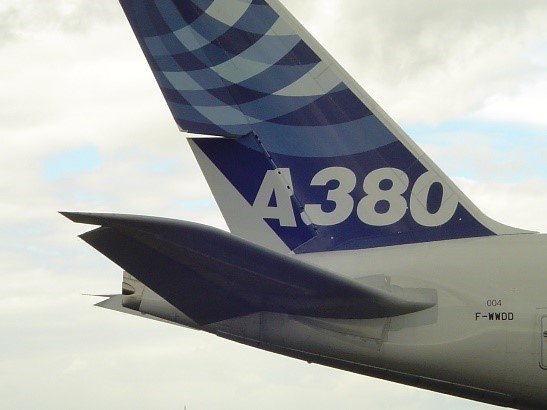
Thiot Ingenierie has joined the TABASCO program. Objective: to develop advanced technologies in order to improve aircraft performance to reduce their environmental impact. The project is focused on the study of an innovative Airbus tail plane.
Goal of the TABASCO program
To achieve better efficiency in the development phase of new structures, the goal of the TABASCO program is to improve the precision of virtual tests in order to reduce the number of test campaigns, and therefore the development costs. For this reason, major metrological means were set up in order to collect as much knowledge as possible on the behavior of materials, in particular by:
- Implementing new methodologies contributing to the validation of virtual test models through correlation with the experimental data;
- Designing innovative tools and test rigs to maximize the instrumented area and better identify the test limiting conditions;
- Seeking advanced instrumentation solutions in order to improve the quality of the results and reduce costs and deadlines for future certification test campaigns.
Partners and players involved
The project was launched by Clean Sky, a European partnership between the public and private sectors. Its objective is to develop a set of technologies required to improve aircraft performance in order to reduce their environmental impact. This partnership is the most ambitious research and development program ever launched in Europe. TABASCO is part of the Clean Sky 2 research program, which aims more specifically at developing a strong and competitive aircraft industry and supply chain at the global level in Europe.
Several players were involved in the performance of the different project tests, including Applus Laboratories and Thiot Ingenierie.
All the static and fatigue tests were conducted on coupons by the Applus laboratory division. These tests enabled Airbus to increase their competence in new composite and assembly technologies. For these tests, Applus had to develop new techniques for instrumentation and on-line monitoring, which were used to monitor the progress of the fatigue tests remotely and in real time.
Following this first test phase on coupons and detail elements, subcomponents representative of a tail plane were produced using the composite technologies selected by Airbus. These are the elements which were tested in the Thiot-Ingenierie laboratory during bird strike tests. Several composite technologies, some with controlled internal defects, were studied.
Our contribution to this project
The task of Thiot-Ingenierie was to guarantee controlled strike conditions (precision of the strike position and speed) and to design tools including the proper metrology to be able to provide consistent data to feed digital simulations.
5 strike tests with 8-lb birds were performed at a speed of 180 m/s. The part dimensions were approximately 2000 x 650 x 250 mm.
Major metrological means were set up perform these tests:
- Twenty strain gage channels;
- Four dynamic stress sensors:
- Three high-speed cameras with a frame speed that can be set at 20,000 frames per second.
The strain gages were distributed on both sides of the leading edge and inside the structure, in such a way as to capture the response of the structure to the strike in the different zones.
The dynamic stress sensors are used to determine the stresses sent by the structure during the strike. This piece of data is essential for the experiment/calculation correlations, as it is representative of the energy absorbed by the structure, and of the stresses transmitted by the leading edge through the rest of the airframe.
The high-speed cameras are used to ensure that the strike occurred at the exact location defined as part of the study. The high resolutions of high-speed cameras made it possible to observe different zones on the structure, both from a general perspective and with respect to local behaviors.
Results
The tests performed showed that none of the composite technologies selected by Airbus caused any rupture. The structures, although roughly handled, maintain their integrity on impact. The test pieces made with internal defects do not show any visible crack propagation. Ultrasound inspections are currently being analyzed at Applus in order to determine whether there is internal damage not visible after the tests. All the measurements were provided to Airbus, which is now working on the experiment/calculation correlation of these 5 tests. At this stage, the tests performed on these new-generation tail planes were very conclusive in terms of material behavior, and it is highly likely that this type of technology will be found on future airframes.
This project has received funding from the Clean Sky 2 European Union’s Horizon 2020 research and innovation programme, under grant agreement No 864940-1.

